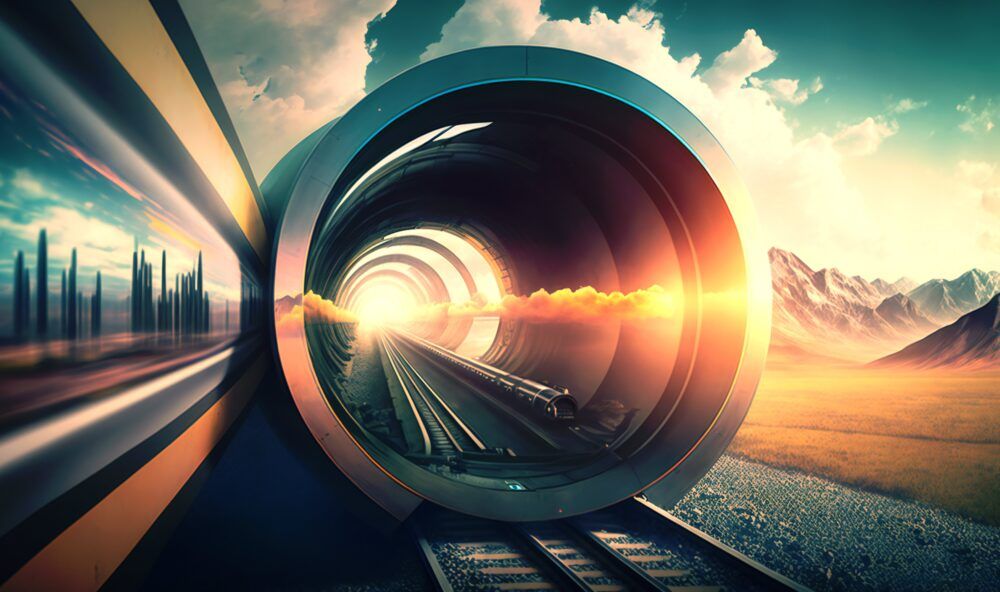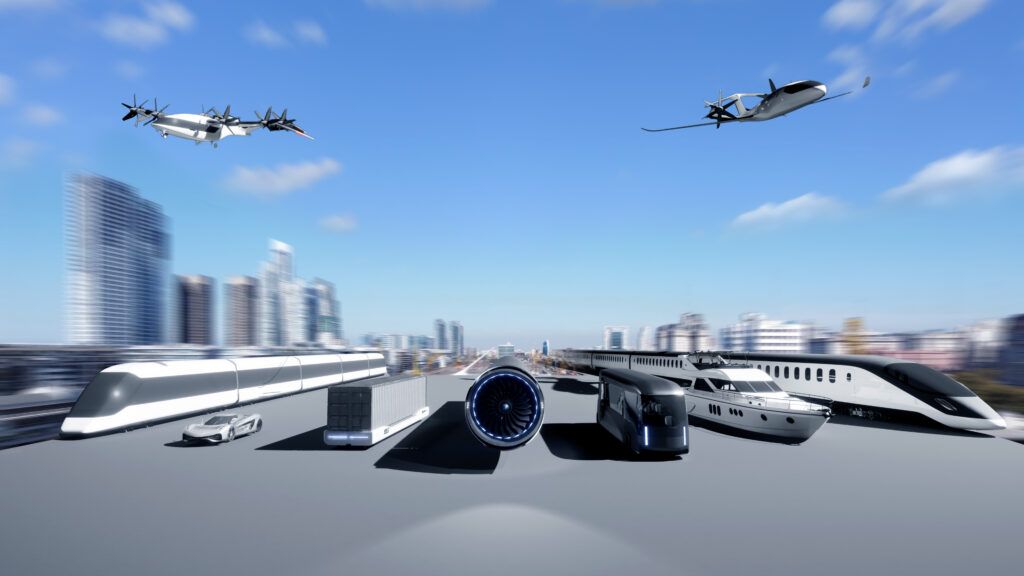
Realities and uncertainties of the hyperloop
Is hyperloop a hype? Several news have clouded the horizon of a disruption meant to revolutionise mobility, such as the closure of Hyperloop One and the announcement by Zeleros to reorient its strategy towards electric mobility. Do these moves put the so-called fifth mode of transport in check or are they a mere setback? Two experts clarify, for PierNext, a panorama full of expectations and unpredictabilities.

Hyperloop is basically a transport system for passengers and goods based on capsules levitating at 1,000km/h inside low-pressure tunnels. Something so spectacular has been generating expectations that, now, after making several negative headlines in recent weeks, have raised doubts about its viability.
First came the announcement of a change in strategy by Spain's Zeleros, which is abandoning the hyperloop "due to the difficulty in finding private capital to finance development," according to Juan Vicén, its CMO.
It was followed a few days later by Hyperloop One (formerly Virgin Hyperloop), which raised $450 million and completed its first and only trial with passengers traveling at 172 km/h, with the announcement of its closure.
"The closure of Hyperloop One and Zeleros should serve as motivation to investigate possible failures and make adjustments accordingly. Hyperloop development is a joint effort and now is a good time to forge partnerships," Aleksejs Vesjolijs, PhD candidate in Transport and Telecommunications and Senior Data Engineer at Accenture Latvia, tells PierNext.

Hyperloop achievements to date
Hyperloop came to the fore in 2015 with one premise: to build kilometer-long straight-line tubes through which vacuum or low-pressure capsules for passengers and goods will levitate at the speed of sound. Start-ups and studies of future projects were presented, such as the Hyperloop TT in the port of Hamburg.
"From our perspective, key technological milestones include establishing and sustaining a vacuum in a full-sized tube, advancing technology for both the guideway and propulsion system, conducting the development and testing of a hyperloop switch, and achieving the inaugural passenger run with a pod in a vacuum tube," Jörg Marienhagen, director of Consulting and Business Development at DB Engineering & Consulting and speaker at the Hyperloop Conference in 2022, lists to PierNext.
Vesjolijs explains that his PhD focuses on creating an interactive hyperloop decision-making ecosystem that supports all existing variants, supports more predictable and transparent development, and extends the range of subsystems or infrastructure combinations to a multitude of providers.
The engineer points out that several projects taking place on different continents are on the verge of completing the development of the hyperloop capsule. "Vacuum tube construction and related technology have come a long way in recent times, but at the same time they face a lot of criticism. It is one thing to successfully test the technology and another to make it efficient. The same goes for the infrastructure. Nevomo's MagLev hybrid solution has made impressive progress, but it is still too early to judge the results," he shares.
Nevomo Magnetic Freight Train
Aleksejs Vesjolijs highlights three goals that have been achieved to date:
- First, the capsule design competitions launched and sponsored by SpaceX from 2015 to 2019, which has led to the creation of hundreds of student teams, new startups, investments, capsule development and increased technology readiness level (TRL). "The TRL is crucial to the advancement and confidence in hyperloop, so this competition enabled the practical development of the technology," he stresses.
- The second milestone is the creation of the Hyperloop Association, which brings together leading European Hyperloop companies, institutions and researchers. "It is essential that stakeholders join forces in technological development. Hyperloop is a team game," he says.
- "The third is dedicated to the Hyperloop at the Munich University of Transport, who are doing a fantastic job in getting the first capsule with passengers to work," highlights the expert.
Ongoing projects
It's one of the partners of the European Hyperloop Center, a state-of-the-art open facility located in the Netherlands where Hardt, along with other developers, will test hyperloop vehicles. Its goal is to refine, validate and standardize the infrastructure and its compatibility and integration of hyperloop systems in different regions.
In 2017, HyperloopTT opened a European Hyperloop Research and Development Center at Aerospace Valley in Toulouse, France, where tests are conducted to demonstrate the validity and performance of its system and components in the low-pressure environment of the tube. They are also responsible, together with the Port of Hamburg, for HyperPort, although no news has been published for the past two years.
The Canadian company is developing FluxJet, which will use all-electric linear induction motors, draw power from the grid and use magnetic levitation to move these vehicles, which will travel along vacuum tubes without drag or friction. They will be 25-meter-long trains, accommodating up to 54 passengers and 11 tons of cargo at a time.
Established as Asia's first hyperloop company, India's DGW introduced Hyperloop development in the country in 2016. It has already completed its feasibility study of the Delhi-Mumbai Hyperloop Corridor and is currently working with local and state governments to accelerate the process.
Promotion of the Indian DGWHyperloop
Obstacles to its development
The challenges to the viability of hyperloop are many. Maintaining the vacuum system, capsule propulsion systems, scalability, safety or economic viability are just some of them.
"From our neutral standpoint, various technology providers and promoters are individually addressing distinct aspects of hyperloop technology, leading to parallel efforts in resolving open issues. Unfortunately, there is minimal collaboration among them, resulting in incomplete systems for most promoters, encompassing technology, standardization, and regulation. The lack of synergy hampers the integration of shared efforts, and notably, there exists a significant technological disparity between Nevomo's MagRail technology and that of other hyperloop promoters," stresses Marienhagen.
For the Director of Consulting and Business Development at DB Engineering & Consulting, it is essential to distinguish between technological and infrastructure aspects.
While defining infrastructural challenges as addressable, he states that they "they hinge on governance, spatial planning, and regulation, requiring considerable time, typical for transport infrastructure."
Instead, he appreciates that the technological challenges are progressively being solved, and many of them are already in the development phase, such as the virtual coupling and decoupling of modules. "However, a concurrent focus on technology, standardization, regulation, and project implementation is lacking. These elements are crucial for establishing a comprehensive Hyperloop network beyond just technological advancements," he reflects.
As far as a common legal framework governing the hyperloop is concerned, the expert does not believe that a global answer is feasible. "Ongoing projects face common processes and regulations, with planning approval and Right of Way grants as primary time-consuming factors," he points out.
For Aleksejs Vesjolijs, hyperloop is a solution to the major transport problems facing Europe. "Air transport is expensive and harmful to the environment. Rail was very expensive two hundred years ago and is still not cheap. In the case of hyperloop, a much worse problem is that the costs are totally unpredictable and this makes the risks quite high for investors," he says.
What is the cause of this unpredictability? He points to the lack of legislation that would allow large-scale testing. "Therefore, if we want to solve the problem, we must prioritize legislation," he adds.
Announcement of the presentation of the Canadian TransPod PluxJet project
Fewer logistical hurdles
The two experts consulted see a hyperloop system as more feasible for freight than for passengers. Jörg Marienhagen makes a distinction, and that is that passenger transport requires a robust safety and security framework, which poses greater challenges than freight transport.
"Seamless integration with other modes of transport is essential for passengers in city centers or at transfer stations. Freight, on the other hand, benefits from a lower security threshold and the possibility of automatic loading and unloading, although repacking is necessary due to container size constraints. A hyperloop freight system could optimize operations by moving freight handling to lower density areas, such as large airports," he says.
Vesjolijs defines the hyperloop as a revolution rather than an evolution. "The latest research shows that it can completely decarbonize the sector. The last piece of the puzzle is to find a sustainable energy supply, although there are already hyperloop system designs that allow the regeneration of spent energy," he says.
The engineer believes that the connection between different regions will create new trade routes and will be especially useful for transporting products with a short shelf life, such as medicines or raw materials for vaccines.
The key difference between hyperloop for people or containers is in the system design and infrastructure. "For the passenger variant, developers are limited to the size of a human body, safety and comfort. In the cargo hyperloop, there are no such constraints and limitations," he details.
Another aspect that differentiates them is that the cargo hyperloop can move faster and reach speeds of more than 4,000 km/h if there are no pressure limitations inside the tube. "However, the question is whether it is really necessary to reach such high speeds," he reflects.
HyperloopTT Express cargo
What hyperloop can we expect?
Given the current situation, Vesjolijs notes that the goal should be to have the first commercial hyperloop operational by 2035. "There is a global race between different stakeholders that stimulates the advancement of the technology. By 2050, the main infrastructure change we can expect will be the subsea construction of Hyperloop lines, which will make way for new transcontinental connections," he advances.
Jörg Marienhagen believes that although it is likely to meet current expectations, "we anticipate that the stations will not be as large as expected due to space constraints in many parts of the world," he says.
Time will tell whether hyperloop stays in the invention box or whether it will revolutionize and decarbonize global passenger and freight transport.



